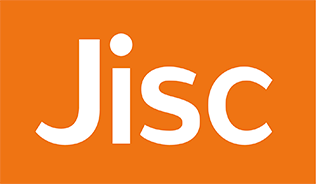Enhancing Continuity of Physiotherapy Care: Investigating the Impact of Missed Follow-up Appointments in Outpatient Settings
Missed Appointment Follow-ups in Physiotherapy
Keywords:
Appointments, Follow-up, Physiotherapy, RecordsAbstract
Background: Physiotherapy is essential in managing chronic diseases in musculoskeletal, neurological and cardiovascular domains. These conditions have high morbidity rates and hence need therapeutic interventions that enhance the quality of life. However, poor adherence to review appointments diminishes treatment effectiveness and healthcare productivity. Evidence from developed countries reveals varying missed appointment (MA) rates, thereby calling for targeted treatments embedded in contextual factors.
Methods: This was a retrospective study using clinic data to identify MA rates and associated variables that included age, gender, and residential origins. The effect of each variable on appointment adherence was investigated. An intervention plan was designed to reduce MA through appointment reminders and patient education. Incentives were also foreseen. Descriptive statistics, Pearson’s correlation and cost-benefit analysis was conducted using SPSS version 23.
Results: The rate of MA was 22% initially, significantly reducing to 12% after the intervention (p<0.001). The demographic variables significantly relating to appointment adherence were age group and residential location (p<0.001, 0.012) respectively. Seasonality and referral sources played their role in attendance patterns, which align with earlier studies on healthcare use determinants.
Conclusion: This study provides deep insights from physiotherapy appointment adherence in Pakistan and depicts successful measures for reducing MAs and improving treatment delivery. The findings represent the values of patient-centred treatments, which result in a better functional outcome for patients, with a smooth running of clinic operations.
References
El-Tallawy SN, Nalamasu R, Salem GI, LeQuang JA, Pergolizzi JV, Christo PJ. Management of musculoskeletal pain: an update with emphasis on chronic musculoskeletal pain. Pain and therapy. 2021 Jun;10:181-209.
Olalekan AA, Jimoh RA. Barriers in Accessing Healthcare Services by Patients with Disabilities in Nigerian Hospitals. Gusau International Journal of Management and Social Sciences. 2021 Apr 14;4(1):17-.
Saif I. Role of physiotherapy on quality of life and level of satisfaction among patients with stroke. The Healer Journal of Physiotherapy and Rehabilitation Sciences. 2022 Jun 30;2(1):104-9.
Kim YN, Gray N, Jones A, Scher S, Kozlowska K. The role of physiotherapy in the management of functional neurological disorder in children and adolescents. InSeminars in pediatric neurology 2022 Apr 1 (Vol. 41, p. 100947). WB Saunders.
Kajaria-Montag H, Freeman M, Scholtes S. Continuity of care increases clinical productivity in primary care. INSEAD; 2021 Jun 16.
Woldenberg C. The Impact of Clinical Education on Student Physical Therapists' Attitudes, Beliefs, and Knowledge of Chronic Pain.
King M. Continuity of Care for Older Adults in a Long-Term Care Setting (Doctoral dissertation, Université d'Ottawa/University of Ottawa).
Martinez RM, Osei-Anto HA, McCormick M, National Academies of Sciences, Engineering, and Medicine. Health Care Organization and Use. InAddressing Sickle Cell Disease: A Strategic Plan and Blueprint for Action 2020 Sep 10. National Academies Press (US).
Crick Jr JP, Alain G, Quatman C, Juckett L, Quatman-Yates CC. Describing the value of physiotherapy in a complex system using the socio-ecological model. Journal of Acute Care Physiotherapy. 2023 Jan 1;14(1):1-9.
Briggs MS, Ulses C, VanEtten L, Mansfield C, Ganim A, Hand BN, Quatman-Yates CC. Predictive factors for patients’ failure to show for initial outpatient physical therapist evaluation. Physiotherapy. 2021 May 1;101(5):pzab047.
Anthony Ganim PT, Brittany N. Predictive Factors for Patients’ Failure to Show for Initial Outpatient Physical Therapist Evaluation.
Zadro JR, O’Keeffe M, Allison JL, Lembke KA, Forbes JL, Maher CG. Effectiveness of implementation strategies to improve adherence of physical therapist treatment choices to clinical practice guidelines for musculoskeletal conditions: systematic review. Physiotherapy. 2020 Sep;100(9):1516-41.
Collado-Mateo D, Lavín-Pérez AM, Peñacoba C, Del Coso J, Leyton-Román M, Luque-Casado A, Gasque P, Fernandez-del-Olmo MA, Amado-Alonso D. Key factors associated with adherence to physical exercise in patients with chronic diseases and older adults: an umbrella review. International journal of environmental research and public health. 2021 Feb;18(4):2023.
Amberger C, Schreyer D. What do we know about no‐show behavior? A systematic, interdisciplinary literature review. Journal of Economic Surveys. 2024 Feb;38(1):57-96.
Kong Q, Li S, Liu N, Teo CP, Yan Z. Appointment scheduling under time-dependent patient no-show behavior. Management Science. 2020 Aug;66(8):3480-500.
Mbada C, Nonvignon J, Ajayi O, Dada O, Awotidebe T, Johnson O, Olarinde A, Aat. Impact of missed appointments for outpatient physiotherapy on cost, efficiency, and patients' recovery. 2012.
Bhavsar NA, Doerfler SM, Giczewska A, Alhanti B, Lutz A, Thigpen CA, George SZ. Prevalence and predictors of no-shows to physiotherapy for musculoskeletal conditions. PLoS One. 2021 May 28;16(5):e0251336.
Fatoye F, Esther AO, Gebrye T, Oyewole OO, Fatoye C, Fasuyi F, Mbada CE. Missed physiotherapy appointment and its influence on cost, efficiency and patients’ outcomes. Annali di igiene: medicina preventiva e di comunita. 2024 Jan 31;36(1):3-14.
Odumodu IJ, Olufunlayo TF, Ogunnowo BE, Kalu ME. Satisfaction with services among attendees of physiotherapy outpatient clinics in tertiary hospitals in Lagos State. Journal of Patient Experience. 2020 Aug;7(4):468-78.
Sharpe JA, Martin BI, Fritz JM, Newman MG, Magel J, Vanneman ME, Thackeray A. Identifying patients who access musculoskeletal physiotherapy: a retrospective cohort analysis. Family practice. 2021 Jun 1;38(3):203-9.
Vasey LM. DNAs and DNCTs — Why Do Pa-tients Fail to Begin or to Complete a Course of Physiotherapy Treatment? Physiotherapy. 1990 Sep 10; 76(9): 575-8. doi: 10.1016/S0031-9406-(10)63052-0.24.
Worsfold C, Langridge J, Spalding A, Mullee MA. Comparison between primary care physio-therapy education/advice clinics and traditional hospital based physiotherapy treatment: a ran-domized trial. Br J Gen Pract. 1996; 46(404): 165-8
Cook LL, Golonka RP, Cook CM, Walker RL, Faris P, Spenceley S, Lewanczuk R, Wedel R, Love R, Andres C, Byers SD. Association between continuity and access in primary care: a retrospective cohort study. Canadian Medical Association Open Access Journal. 2020 Oct 1;8(4):E722-30.

Downloads
Published
Issue
Section
License
Copyright (c) 2024 Arooj Malik, Sania Gelani , Syeda Fatima Hashmi , Dr. Anum Safeer, Jai Vansi, Dr. Asma Ghafoor

This work is licensed under a Creative Commons Attribution-NonCommercial 4.0 International License.













